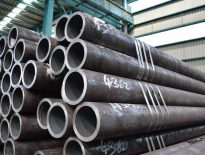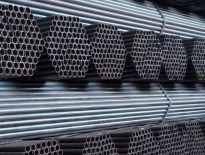A heat exchanger is a heat transfer device between a solid body and a fluid, or from two or more fluids. Such materials are segregated by a wall such that they are not combined, though they may be in direct contact. Heat exchangers play an important role in the functioning of multiple systems and procedures. The heat exchanger is for example found in the hot water boiler, the freezer. Energy is transmitted to the boiler in the former situations and energy is transferred away in the latter, so that the freezer stays cool.
There are several different types of heat exchangers. The heat exchangers with double pipes are very basic in structure and are used in the industry. The repairs and design are cheaper. They are, on the contrary, low in efficiency and occupy a large space. Modern factories then use more effective heat exchangers called the shell and tube or plate.
There are several tubes in the heat exchanger. They are available in a wide variety of materials, including Stainless Steel Heat Exchanger Tubes, duplex stainless steel, nickel alloys, zirconium, and titanium, suitable for all types of heat exchangers such as heaters, evaporators, condensers, seawater coolers, and re-heaters.
The heat exchanger tubes are finned, plain, internal or external. Normal heat exchangers use plain tubes, while the finned tubes provide a high heat transfer surface. Another type of tube is the duplex tube, which is mounted inside the tube by drawing the tube out into the inner tube.
The tubes diameter varies from 6 mm to 40 mm. The thickness depends on the construction materials and their diameters. The length of the tube varies from 0.5 to 6 m. They lay either on a square or on an equilateral triangular pitch.
If the heat exchanger tube breaks, it can be replaced by expanding and rotating the tool to the ends of the tube in the tube sheet holes.
Applications and Uses
The Stainless Steel 304 Heat Exchanger Tubes are used in many industries such as chemical, hydrocarbon manufacturing, oil refining, and aerospace for various purposes such as heating or reheating, gas cooling, fluids, or air.
It is also used in generating power, i.e. Nuclear, solar and thermal power plants, oil and gas, refining and petrochemical, manufacturing industries, chemical and fertilizer industries, atomic energy, pulp, and paper industries, defense, and aerospace industries, etc.
The heat exchanger tubes are available in two types – a) Straight b) U- bent
-
Straight tubes:
The tube’s two ends are mounted onto the tube sheets. One fluid goes the tube and the other goes to the shell. They have phenomenal high fouling qualities. They are used where the crossing of high temperatures is frequent. The heat exchanger can be quickly washed from straight tubes.
-
U- bent tubes:
U–bent tubes consist of a U-shaped tube that is attached to a tube sheet and is supported by tube baffles. These are of outstanding quality. U-Bent tubes can be tailored according to the needs of the customer. Such tubes are cut with different lengths of legs, their ends are deburred and the dry air cleanses the bores properly.
While manufacturing heat exchanger tubes there are several factors to be considered:
- Dimensional tolerances for diameter
- Eccentricity
- Wall thickness
- Length
- Mechanical properties
- Corrosion resistance
- Surface finish
Inspection is required of the heat exchanger tubes. This is very important because their surface is the most prominent field of heat transfer or any corrosion that can have drastic effects on their performance.
The remote field electromagnetic technique is one of the best techniques for inspecting the tubes. It is a highly developed test method compared to the basic inspection methods used by other companies, such as visual inspection, magnetic particles, and dye penetrant testing.
If the heat exchanger tubes are properly cleaned and maintained, you can be assured of the unit’s long life and therefore aid in low energy consumption.


